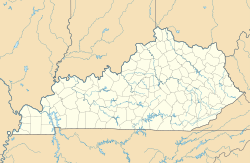Current building
The Church's current building cost more than $130,000, to build and had a lengthy construction process. The congregation adopted a strict policy to "pay as the building was erected," ensuring that no debt was ever allowed to accumulate against the building. Work began on the building in the fall of 1924 and by spring of 1928, the new building was completed enough to be used for services. It was formally dedicated on Sunday, October 25, 1936, completely free of debt. [4]
Additions and expansions
In the late 1940s, a shortage of space for Sunday School classes led the church to undertake a major building campaign. Under the leadership of Pastor H. C. Chiles, the church approved plans for a large Educational Building to be added onto the existing building in April 1949. The $97,000 structure was constructed quickly with extensive donated labor and services. The 84-room building was completed and opened on May 21, 1950, resulting in a record-breaking Sunday School attendance of over 1,000 on its first day of use. [5] This addition created an L-shaped building and was designed to be harmonious with the main structure. [1]
On June 22, 1958, a $126,000 addition to the auditorium was opened to the public that enlarged the rooms seating compacity to 1,600. [6]
In 1994, a three-story, 21,000-square-foot addition to the educational building was erected costing approximately $1.5 million. Groundbreaking took place on April 11, 1993, the new facility provided a dedicated educational space for all children and youth age groups. [5]


